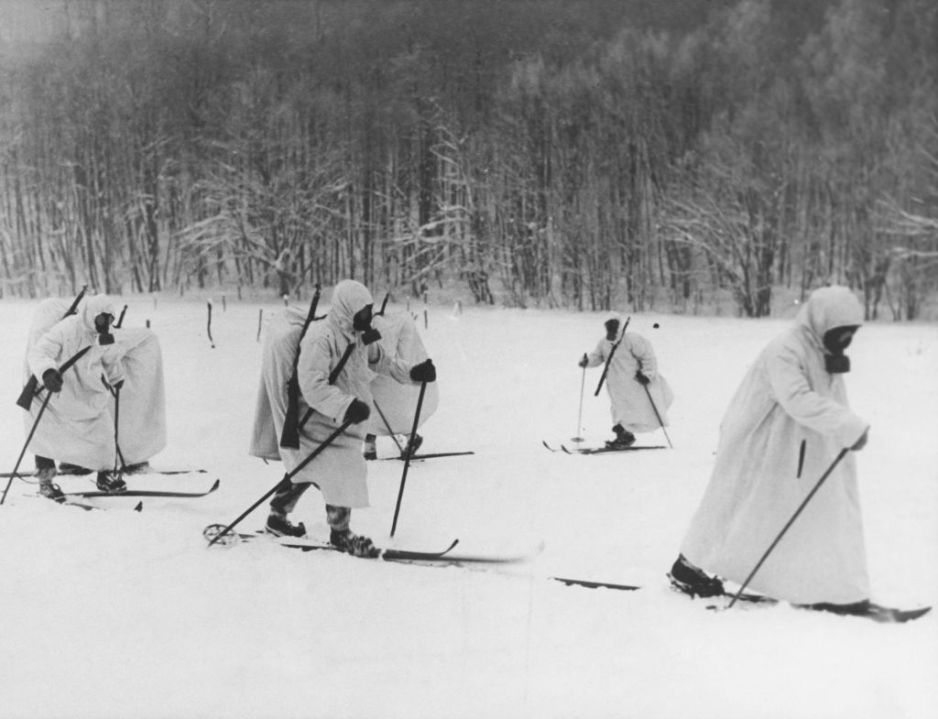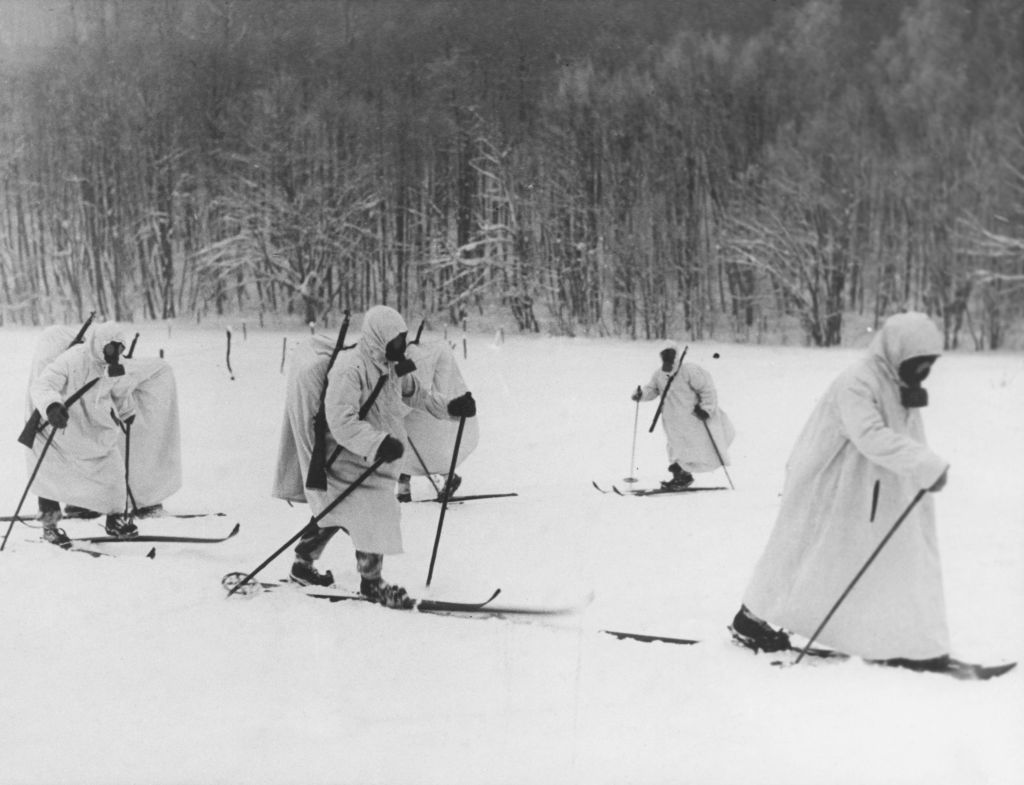Finland’s entry into Nato in 2023 dealt a major blow to Russia in the Baltics. For years, President Putin had warned his Finnish counterparts that a decision to join the alliance would be met with an appropriate response, but the implicit threat has been slow to materialise. In February, Russia reconstituted its Leningrad Military District, a Soviet-era administrative region tasked with defending Russia’s northwestern territories, but otherwise there’s been a palpable quiet in the far north. In recent weeks, this has begun to change.
On 18 November, the sole fibre optic cable linking Finland and Germany was severed, and hours after a cable connecting Sweden and Lithuania was also cut. The German defence minister, Boris Pistorius, was quick to declare the incident an act of sabotage and a ‘hybrid action’ but so far no culprit has been named. Suspicion has fallen on a Chinese merchant ship, the Yi Peng 3, which sailed from Russia with a cargo of fertiliser and has been anchored in Danish territorial waters for three weeks, encircled by Nato warships.
In a similar maritime incident late last year, the Balticconnector gas pipeline between Finland and Estonia was damaged after the Newnew Polar Bear, another ship with ties to both Russia and China, seemed to have ‘accidentally’ dragged its anchor across it. On Monday, a third fibre optic cable was damaged near Helsinki. The Finns say it was a construction accident, but amid these heightened tensions a pattern seems to be emerging.
The threat of hybrid warfare against Finland is nothing new
On 30 October, former President Sauli Niinisto published a highly anticipated report, titled Safer Together: Strengthening Europe’s Civilian and Military Preparedness and Readiness, meant to bolster the EU’s resilience to various threats. ‘We need to deter malicious actors who are currently conducting a hybrid campaign against us with relative impunity,’ he said while presenting the report to Ursula von der Leyen in Brussels. Among his suggestions were long-term investments in strategic infrastructure, ‘deterrence through preparedness,’ and, most notably, a central European intelligence agency.
In Helsinki, Niinisto, who left office earlier this year, told me that Finland brings an additional burden to Nato given its proximity to Russia, but also the Finnish ‘Sisu,’ a particular sensibility, meaning, in his words, ‘a mindset of being as strong as small can be.’ In his experience, strength is the only thing that matters when dealing with Moscow, and it’s an area where Europe desperately needs to improve as America’s attention turns toward the Pacific. Emphasising his point, Niinisto recounted to me a story from the Bolshevik revolution. ‘Lenin gave advice to his soldiers: “Try it with a bayonet. If you meet soft, push, if you meet steel, retreat.” This kind of lesson is also in Putin’s head.’
Esa Rautalinko, the CEO of Patria, Finland’s largest defence contractor, is now on the front lines of Europe’s rearmament, and has no illusions as to the scale of the problem Europe now faces. ‘Looking at the deficit that Europe has today, especially when it comes to hardware, and software as well, its trillions of dollars,’ he told me, adding that Europe’s rearmament ‘should be somewhere in the ballpark of our ambitions on green transition and green energy.’
Finland’s history is characterised by its geographic isolation and a mercurial relationship with its eastern neighbour. Since the closure of the land border with Russia last December (a single railway crossing remains open for now), Finland’s economy has become increasingly insular. The roads connecting to Sweden and Norway via Lapland in the far north see little commercial traffic, while the Finnish railway network, like that of nearly all former subjects of the Russian Empire, is Russian gauge, incompatible with the rest of Europe’s rail network. That leaves roughly 95 per cent of the country’s trade to come in and out by sea, where it is far more vulnerable to disruption.
This decoupling has not been good for the Finnish economy. The economic divergence began in 2008, when the weakening of the ruble slowed Russia’s appetite for Finnish goods, but the sanctions levied against Russia after the seizure of Crimea accelerated the trend, with cross-border tourism plummeting in 2014 as food and agriculture exports fell by 75 per cent. As a result, Finland’s post-2022 decoupling from Russia was less of a blow, but the eastern part of the country has seen a real estate market collapse and almost no external investment. Under the circumstances, the threat of hybrid warfare carries dire implications.
The fact is, Finland is very unlikely to be attacked through conventional means. Its geography is dominated by thousands of lakes and dense, evergreen forests that make it exceedingly difficult to invade, not to mention that Finland is conspicuously well prepared for war. A system of general conscription, the most comprehensive in Europe, ensures that all males are called to serve at the age of 18 and remain reservists for much of their lives. Finland also possesses the largest artillery in Europe and a formidable arsenal of tanks and fighter planes. Alongside Nato membership, Finland signed a bilateral Defence Cooperation Agreement with the United States last December, which came into effect on 1 September. The agreement gives US forces access to 15 sites across Finland, including airfields, a naval base and logistical infrastructure near the Russian border. Further measures, such as nuclear weapons sharing, are treated delicately, but have not been ruled out.
Recently, the Finnish defence community has debated whether or not to withdraw from the Ottawa Convention, which prohibits the use of anti-personnel mines. Doing so would enable them to deploy such landmines along the Russo-Finnish border. The farther Finland moves away from its historic non-alignment, the more Russia feels the urge to retaliate. Without many conventional options, Russia may have settled on a shadowy game of sabotage and diversion in an attempt to even the score.
The threat of hybrid warfare against Finland is nothing new. One notable, early instance of it occurred in 2015, when, amid the European migrant crisis, a suspicious inflow of people came across the Russian border. There were only a few thousand of them, but upon investigation, it was found that many of them had been legally resident in Russia for years, only to have their authorisations suddenly revoked. They’d then been sent to the border. Russo-Finnish border cooperation had been very good as far back as the Cold War, but this time, when the Finns made formal inquiries, they struggled to reach their counterparts. When negotiations were finally held, their officials were told that depending on what Finland chose to do in the future, Russia could release up to 1.4 million people into their country of 5.6 million.
Back in 2022, public opinion on Nato membership shifted dramatically. In January, a poll by the newspaper Helsingin Sanomat revealed that a mere 28 per cent of the public supported full membership in the alliance, consistent with the previous decades. In March, just three weeks after Russia invaded Ukraine, a poll from the Finnish public broadcaster Yle showed that 62 per cent were now in favour of joining, and in May, the parliament voted 184-7 to start the accession process.
Russia operates its secretive GUGI deep-sea warfare program out of Olenya bay in the Kola peninsula
Mika Niikko, a former Finns Party MP who served as the chairman of the foreign relations committee until February 2022, abstained from that vote. He believes that the process was rushed and told me that the country’s political leadership was afraid of foreign influence corrupting the process. ‘At that time, a referendum was seen as essential. However, both the parliament and the President changed their minds about asking the public’s opinion,’ he said. ‘There was concern about foreign influence on the vote outcome and the belief that the public might not fully understand the issue.’
‘In my opinion, there was no reason to fear a referendum, and I don’t believe the result would have been any different,’ Niikko added.
Sir Ben Wallace, who visited Finland in January 2022 in his capacity as UK defence minister, told me recently that the move had caught him off guard. ‘There was no secret agenda to bring them in, and it took us completely by surprise, including one of the wisest leaders in Europe, Sauli Niinisto. No one thought that Finland would join,’ he said. Wallace, now a partner at the private equity fund Boka Group, believes that acts of sabotage targeting Finland and other Nato countries will continue, while stopping short of a direct confrontation. ‘You’ll see a growth in infrastructure attacks but still subthreshold. What is really telling is that, despite it all, Russia has been very cautious to never cross into Nato countries. I think you’ll see more of the cable thing, just because they can.’
Russia operates its secretive GUGI deep-sea warfare program out of Olenya bay in the Kola peninsula. Among their capabilities is the means to sabotage undersea infrastructure like cables and pipelines. ‘Their program has been going on for a long time and all of us have been slow to respond,’ Wallace warned.
After fighting the Soviets in the Winter War and Continuation War, Finland lost 12 per cent of its landmass, its second largest city, Viipuri, and one of Europe’s largest nickel deposits at Petsamo in the arctic. Nonetheless, the country defended itself so well that Stalin forever abandoned his hopes of annexing Finland into the Soviet Union. This resilience enabled the postwar presidents Juho Paasikivi and Urho Kekkonen to formulate a doctrine of active neutrality, enabling decades of peace and prosperity in the shadow of great power conflict. Finland has since chosen a different path, and its place in the security networks of the West is now written in stone. But given the vulnerabilities of Finnish geography, these recent ‘hybrid’ incidents, cloaked in a veil of uncertainty, will be a challenge for the small Nordic state. What’s worse, they may only be a preview of what is to come.








Comments